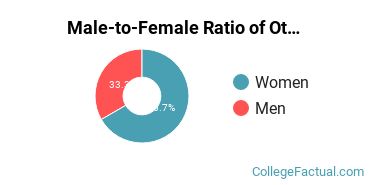 by our College Data Analytics Team
by our College Data Analytics TeamOther Communication & Media Studies is a concentration offered under the communication and media studies major at Colorado State University - Fort Collins. We’ve gathered data and other essential information about the master’s degree program in other communication and media studies, such as diversity of students, how many students graduated in recent times, and more.
If there’s something special you’re looking for, you can use one of the links below to find it:
During the 2019-2020 academic year, part-time graduate students at Colorado State paid an average of $1,433 per credit hour if they came to the school from out-of-state. In-state students paid a discounted rate of $584 per credit hour. The average full-time tuition and fees for graduate students are shown in the table below.
| In State | Out of State | |
|---|---|---|
| Tuition | $10,520 | $25,791 |
| Fees | $2,264 | $2,264 |
Colorado State does not offer an online option for its other communication and media studies master’s degree program at this time. To see if the school offers distance learning options in other areas, visit the Colorado State Online Learning page.
Women made up around 90.9% of the other communication and media studies students who took home a master’s degree in 2019-2020. This is higher than the nationwide number of 71.4%.

Of those graduates who received a master’s degree in other communication and media studies at Colorado State in 2019-2020, 18.2% were racial-ethnic minorities*. This is lower than the nationwide number of 34%.

| Race/Ethnicity | Number of Students |
|---|---|
| Asian | 0 |
| Black or African American | 0 |
| Hispanic or Latino | 2 |
| Native American or Alaska Native | 0 |
| Native Hawaiian or Pacific Islander | 0 |
| White | 5 |
| International Students | 4 |
| Other Races/Ethnicities | 0 |
You may also be interested in one of these majors related to other communication and media studies.
| Related Major | Annual Graduates |
|---|---|
| Speech Communication | 7 |
View All Other Communication & Media Studies Related Majors >
*The racial-ethnic minorities count is calculated by taking the total number of students and subtracting white students, international students, and students whose race/ethnicity was unknown. This number is then divided by the total number of students at the school to obtain the racial-ethnic minorities percentage.
More about our data sources and methodologies.